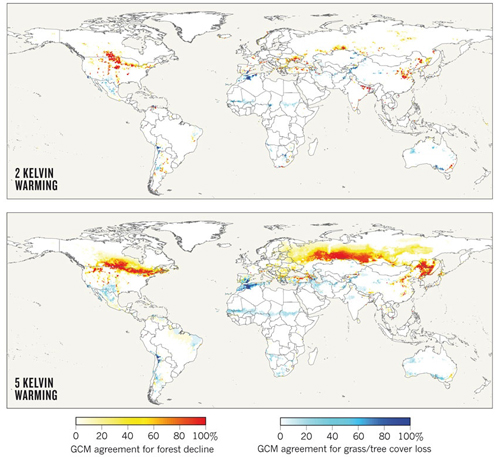There is a growing urgency to produce global projections of how a warming climate could affect life on Earth.
“Impact research is lagging behind physical climate sciences,” says Pavel Kabat, director of the International Institute for Applied Systems Analysis (IIASA) in Austria. “Impact models have never been global, and their output is often sketchy. It is a matter of responsibility to society that we do better.”
Time is running out for researchers hoping to contribute impact simulations to the IPCC’s Fifth Assessment Report (scheduled for publication in 2014). So last month, the IIASA and the Potsdam Institute for Climate Impact Research (PIK) started a project to compare climate-impact models collected from more than two dozen research groups in eight countries. The Inter-Sectoral Impact Model Intercomparison Project (ISI-MIP) will integrate climate data from state-of-the-art models, using a range of greenhouse-gas emission scenarios (models used in the project can be found here). Because the various emissions scenarios result in a range of projected global temperature increases, potential impacts also can vary widely across a range of scenarios. It is hoped that the project will clarify systematic biases that can cause models to produce disparate results.
The models will investigate the effects of climate change on global agriculture, water supplies, vegetation, and health. Results are due by July 1, and reports on each of the four impact areas are scheduled to be completed by January of 2013. This means the data could be available for the IPCC’s next report–which “will make a real difference for the assessment process,” notes Chris Field of the Carnegie Institution for Science, cochair of IPCC Working Group II. “I greatly appreciate the initiative required to get this activity underway, and I appreciate the commitment to fast-track components that will yield results in time for inclusion in the IPCC Fifth Assessment Report.”
The ISI-MIP is scheduled to continue into 2013 and could be expanded to analyze climatic impacts on transport and energy infrastructures.
